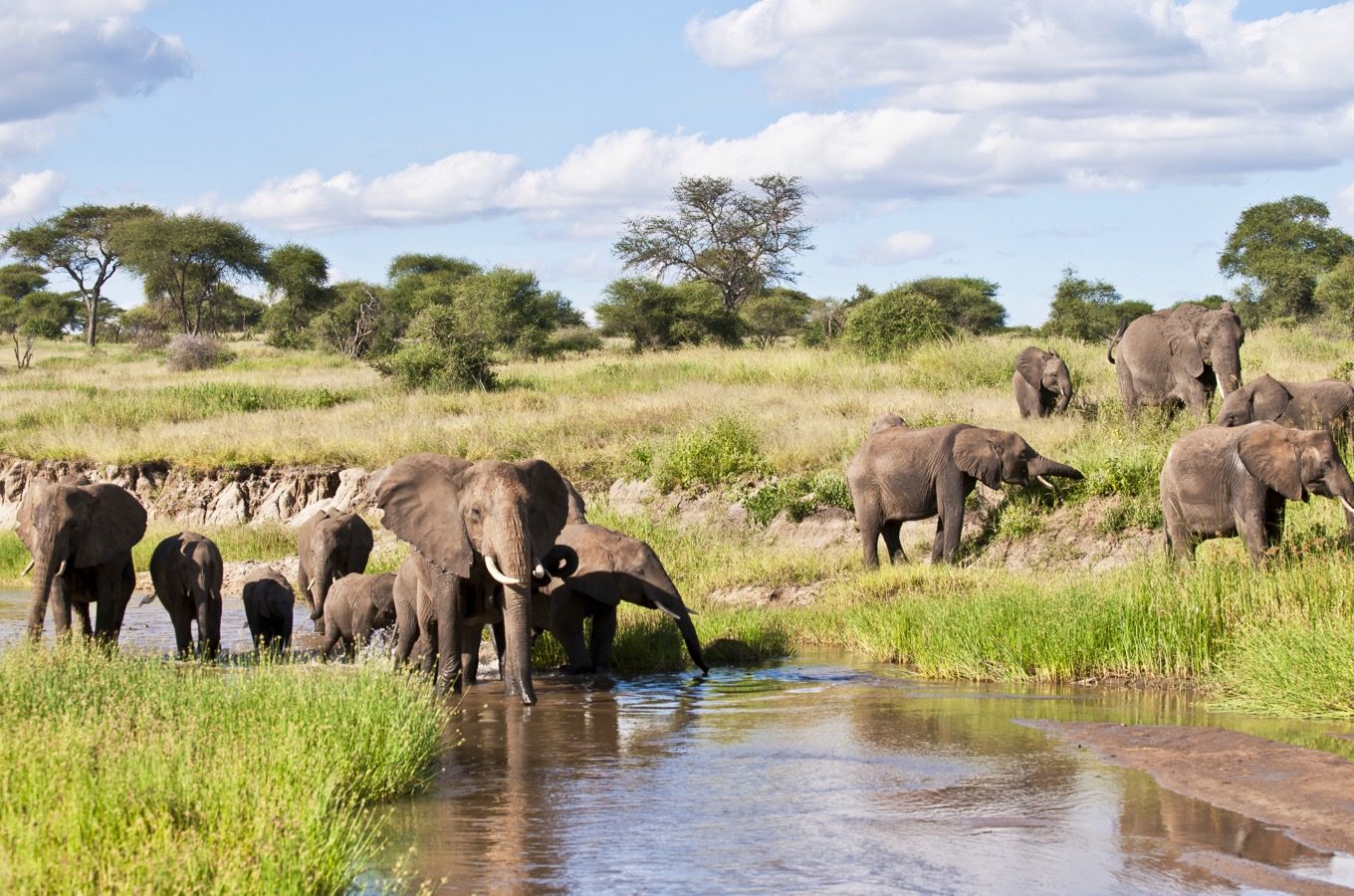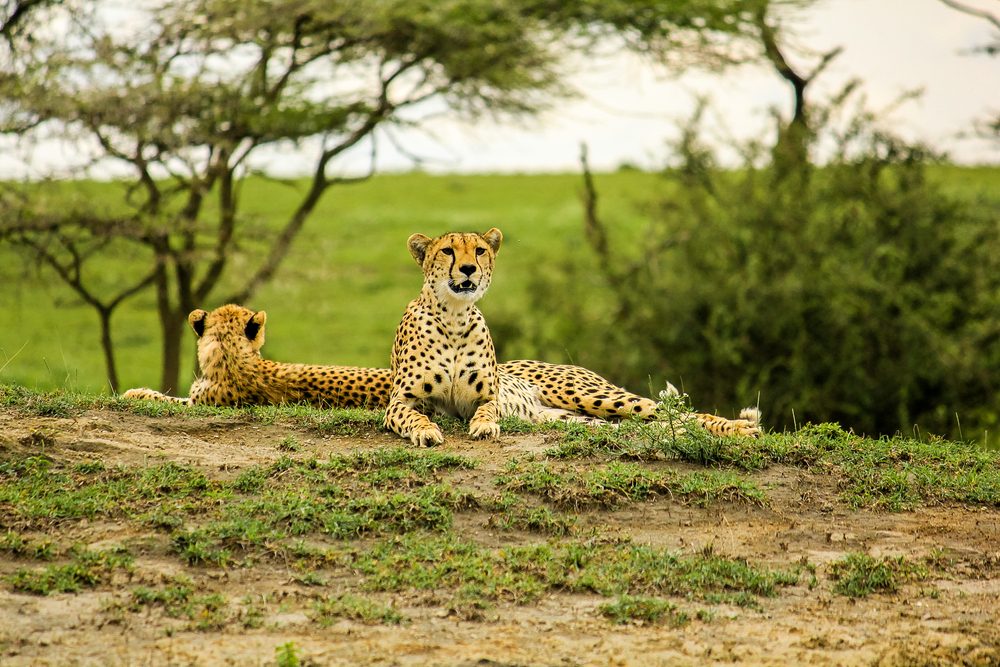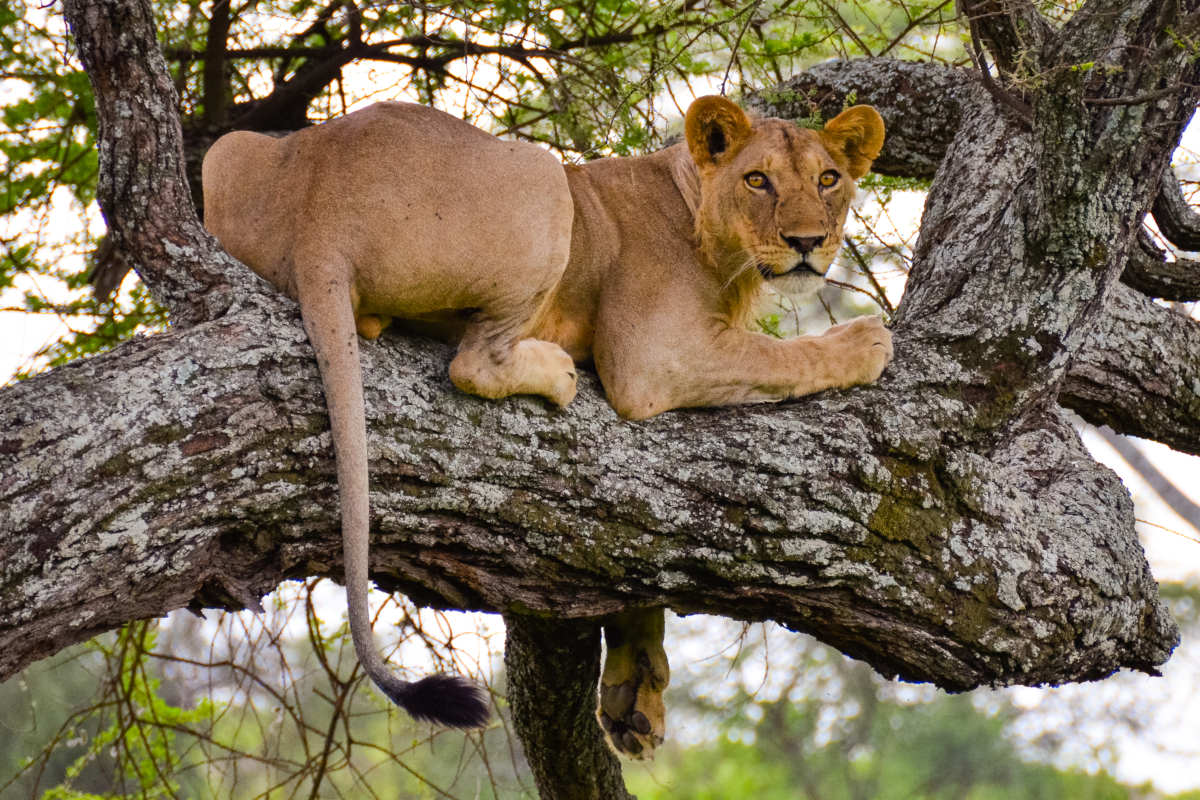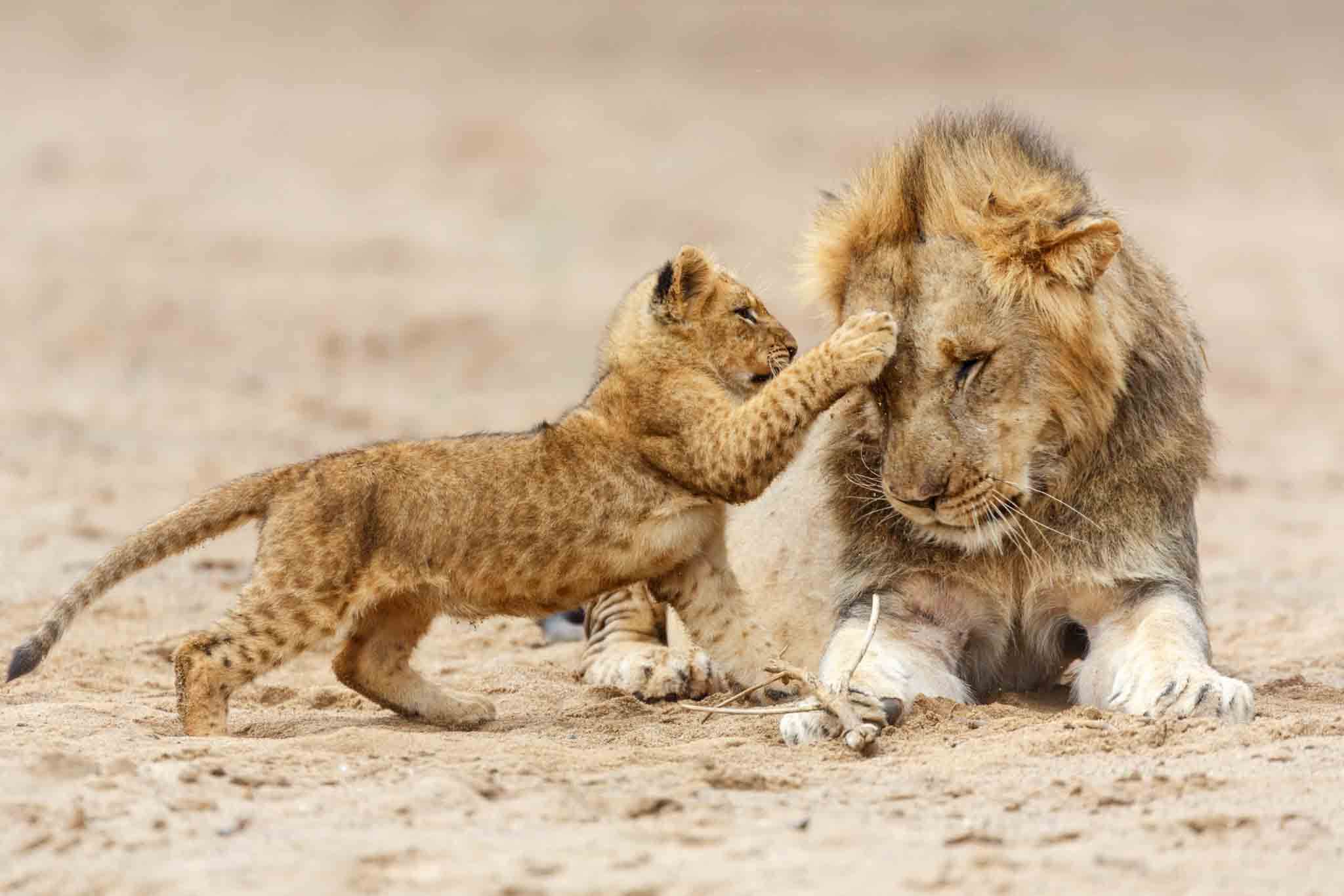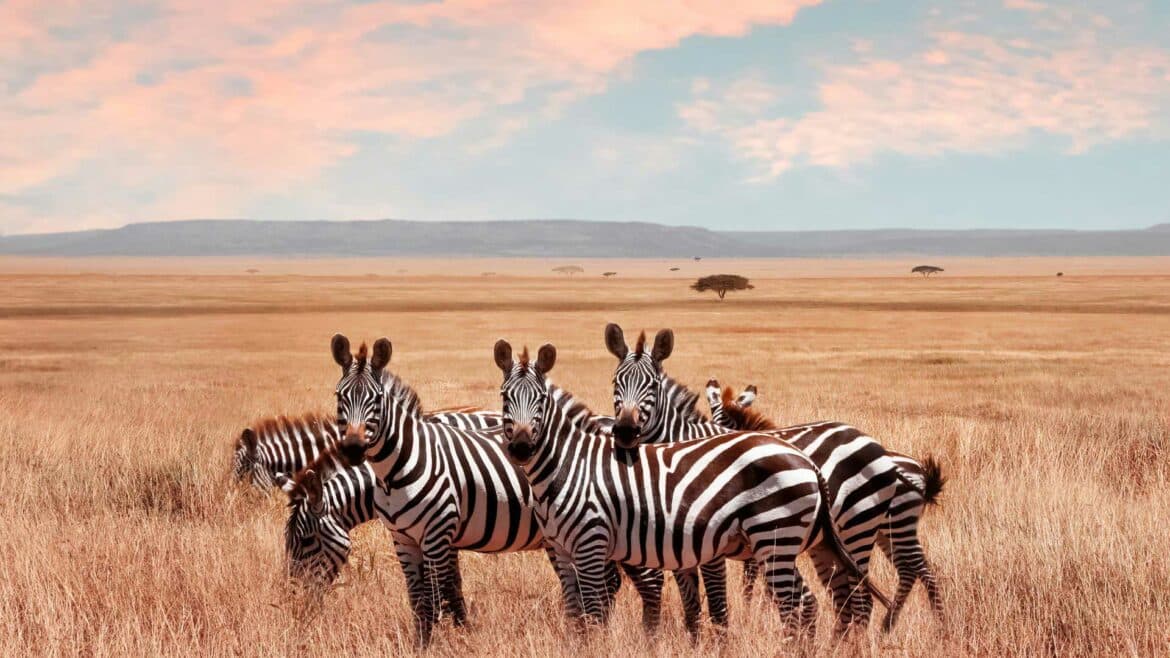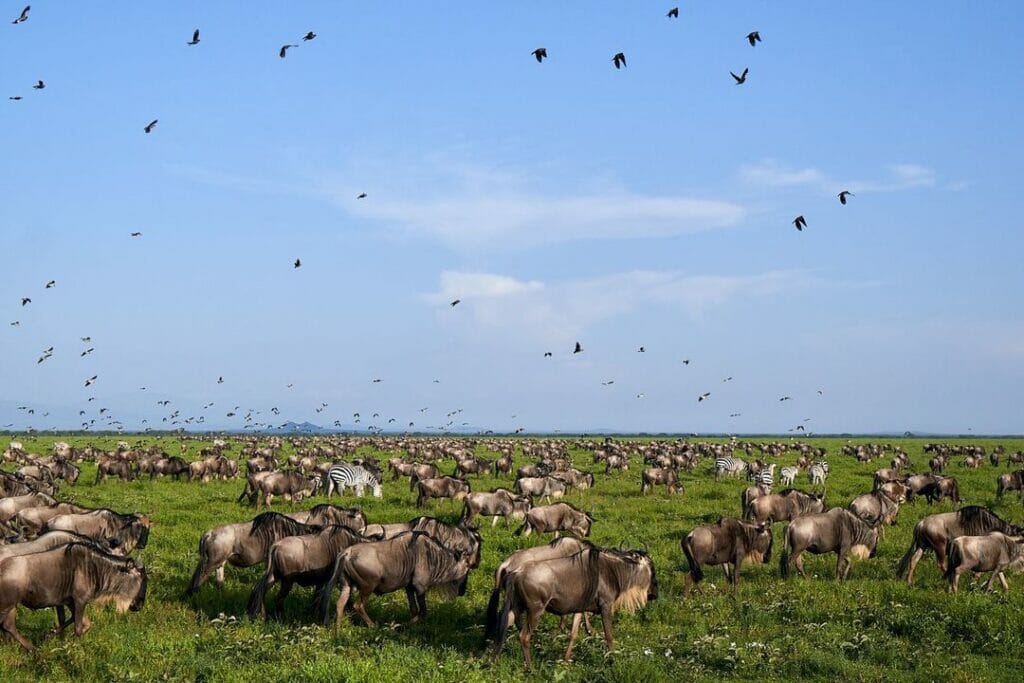Ngorongoro Crater
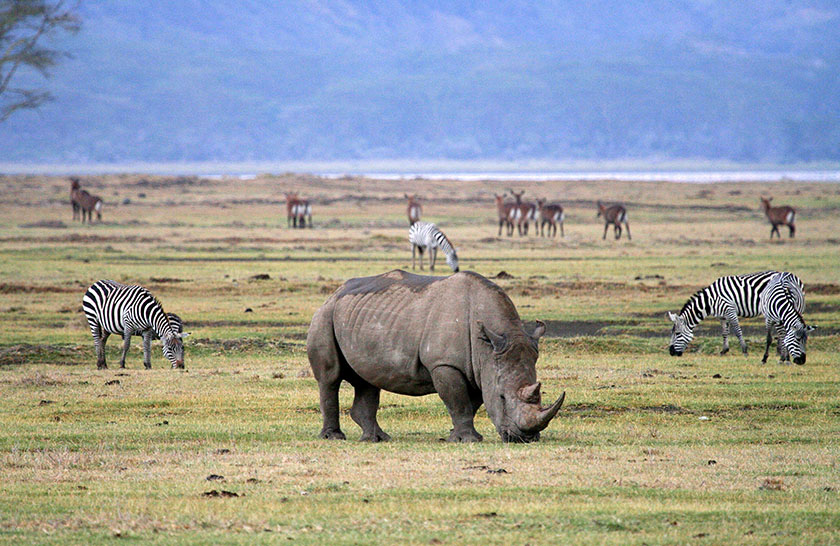
Ngorongoro Crater
Overview
Ngorongoro Crater, often called the "Eighth Wonder of the World," is a UNESCO World Heritage Site located in northern Tanzania. It is the world's largest unbroken volcanic caldera, spanning 260 square kilometers (100 square miles) and standing at about 610 meters (2,000 feet) deep. Formed millions of years ago, the crater's fertile floor supports a rich diversity of wildlife, making it one of Africa’s premier safari destinations. Ngorongoro is part of the Ngorongoro Conservation Area, which is unique for allowing both wildlife and the semi-nomadic Maasai people to coexist.
Wildlife
Ngorongoro Crater is a wildlife haven, often described as a "natural zoo." It's home to approximately 25,000 large animals, including the "Big Five": lions, leopards, elephants, buffalos, and the critically endangered black rhino. The crater is also known for its dense predator population, particularly its high concentration of lions. Visitors will find large herds of wildebeest, zebras, Thomson’s gazelles, and buffalo, alongside hippos wallowing in the freshwater pools. The crater’s diverse habitats, from savannah plains to forests and swamps, support a variety of animal life year-round.
Birds
Ngorongoro Crater is a paradise for bird enthusiasts, boasting over 500 bird species. The permanent water sources within the crater attract a variety of waterfowl, including flamingos, herons, and storks. Lake Magadi, a shallow soda lake within the crater, is a magnet for thousands of pink flamingos, creating a stunning spectacle. The forested areas are home to colorful birds like the emerald cuckoo, while raptors such as the augur buzzard and martial eagle can often be seen soaring above.
Best Time To Visit
Ngorongoro Crater can be visited year-round, but the best time for wildlife viewing is during the dry season, from June to October. During this period, the grasses are shorter, and animals are easier to spot. The wet season, from November to May, is the best time for birdwatching as migratory birds arrive, and the crater is lush and green. March to May, during the long rains, sees fewer tourists, making it a great time for a quieter safari experience.
Weather & Climate
The climate in Ngorongoro Crater is mild due to its elevation, which ranges from 1,800 to 2,400 meters (5,900 to 7,900 feet) above sea level. Temperatures are cooler compared to lower altitudes, typically ranging between 10°C to 25°C (50°F to 77°F). The area experiences two rainy seasons: the short rains from November to December and the long rains from March to May. The dry season, from June to October, is cool and dry, making it the ideal time for safaris.
Getting There
Ngorongoro Crater is located about 180 kilometers (112 miles) from Arusha, and the journey takes around 4 hours by road. The crater is often included in the Northern Safari Circuit, alongside iconic destinations like the Serengeti and Lake Manyara. The nearest airstrip is in Lake Manyara, with charter flights available from Arusha or other major hubs. Once in the conservation area, visitors can drive to the crater's rim and descend the steep, scenic roads to the crater floor with an authorized safari guide.

